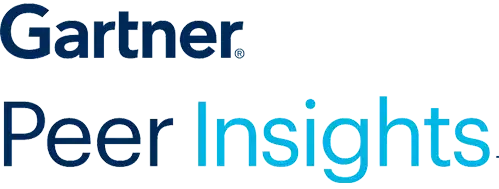Dynamic Map and Path
Discover and visualize your network architecture, configurations, and device relationships without manual coding. Explore your entire multi-vendor network, edge to cloud, and automatically map your network topology with accuracy, including bidirectional traffic paths, in real time. With NetBrain's automated network mapping, you get constant network visibility without lifting a finger.Enhanced Network Management
Complex networks typically involve numerous relationships between devices, demanding constant monitoring for vulnerabilities and threats. Being familiar with the network topology is essential for network engineers to conduct diagnosis and remediation effectively.
NetBrain’s Automated Network Mapping gives network engineers and operations managers a free pass to the entire map network topology, making planning changes and troubleshooting issues faster and easier.
Interactive Canvas
NetBrain’s network mapping utility gives users access to Dynamic Maps. This interactive canvas helps you visualize several layers of data within the network, including network performance insights in a digestible format.

- Utilize maps to create assessment automation, troubleshoot interactively, and optimize your workflows.
- Drill down into devices, paths, and Intents — color-coded on the map — to access real-time diagnostic data for immediate troubleshooting.

- Generate A-to-B paths on demand and within seconds, with each map adapting dynamically to the specific application.
- Get a global view of your network site-by-site. Zoom in and out to view connection details, toggle data view on or off, and compare live network data against previous benchmarks.
Multi-Vendor Context
With multi-vendor support from NetBrain, you can maintain compatibility with a wide range of devices from different manufacturers. Futureproof your network with connectivity across different network environments. Diversify your ecosystem and easily manage heterogeneous networks.

- Overlay diagnostic data from Intents with a third-party API parser template. See your entire ecosystem, including CMDB, ITSM, Splunk, Solarwinds, ThousandEyes, Jira, ServiceNow, and BMC.
- Enrich your dynamic maps with additional context and actionable insights by drilling down and running automated diagnostics.
Map Any Hybrid Network
Get a comprehensive visualization of the entire network topology, including local data centers and cloud resources. Easily manage your organization’s network infrastructure with one cohesive view of your hybrid network.
Map application paths across traditional and multi-cloud and SDN/SD-WAN networks automatically factoring dynamic and static routing, ACLs and firewall rules, network translation (NAT), and L2 forwarding information.


Path Analysis and Comparison
Visualize data paths between devices connected to your network, including information on how data traverses your infrastructure. Provide your engineers with valuable context to understand bottlenecks and improve data flow. Take advantage of accurate and updated insights to make informed decisions regarding optimizations.
- View historical traffic paths and compare traffic flow patterns over time. Analyze data packets and their behavior within your local network map to identify which ones are prone to latency.
- Compare live application paths to their intended “golden” (or healthy) saved paths and detect deviations.
- Conduct simulations on potential path changes and how re-routing and modifications can impact network connectivity.
Cloud Path Map and Data
Map and analyze data paths for both on-premise environments and cloud services. Ideal for organizations relying on cloud services or hybrid networks, NetBrain’s cloud path mapping capability helps users analyze and optimize hybrid applications.

- Draw a cloud path with baseline data.
- Get all Azure Virtual Network Gateway or Google or AWS VPC model device details.
- Check Azure Virtual Network Gateway (VNG) VPN, Google Cloud Router, or AWS Virtual Private Gateway (VGW) virtual tunnel problems on mapped devices, highlight the alert in red and normal in green.
- Get detailed information on performance metrics, including response times and throughput. Easily show results on a summary dashboard.
Export Documentation
Automatically generate documentation for your network diagrams, device configurations, and operational processes. Export reports in various sharable formats to your stakeholders to streamline compliance, auditing, and knowledge transfer. Maintain an accurate and updated record of your organization’s network configurations.

Save and export Dynamic Maps into native, editable formats such as Microsoft Word and Microsoft Visio. Include associated design and inventory data, diagnosis details, full configuration files, and routing tables for easy sharing and analysis.












